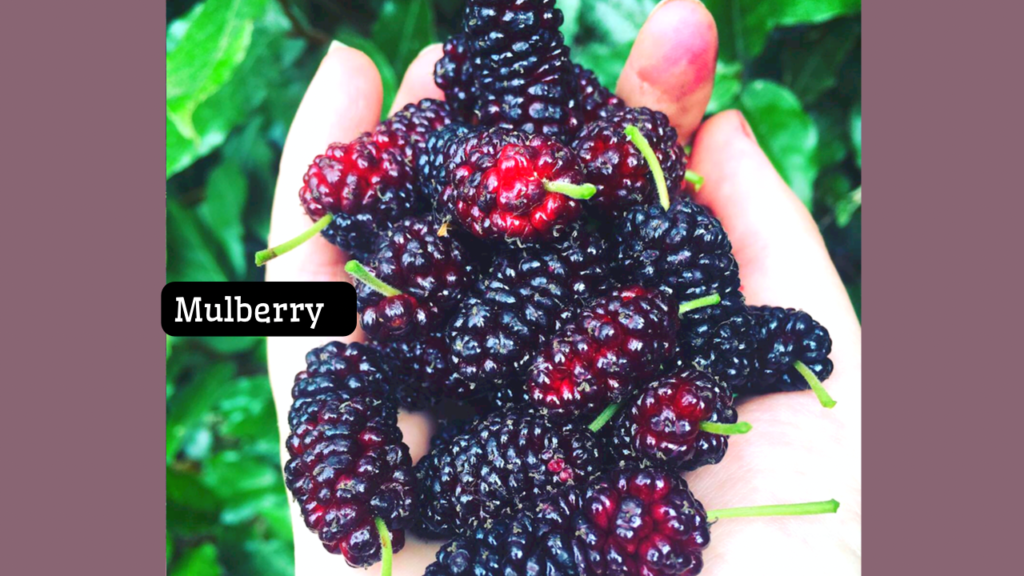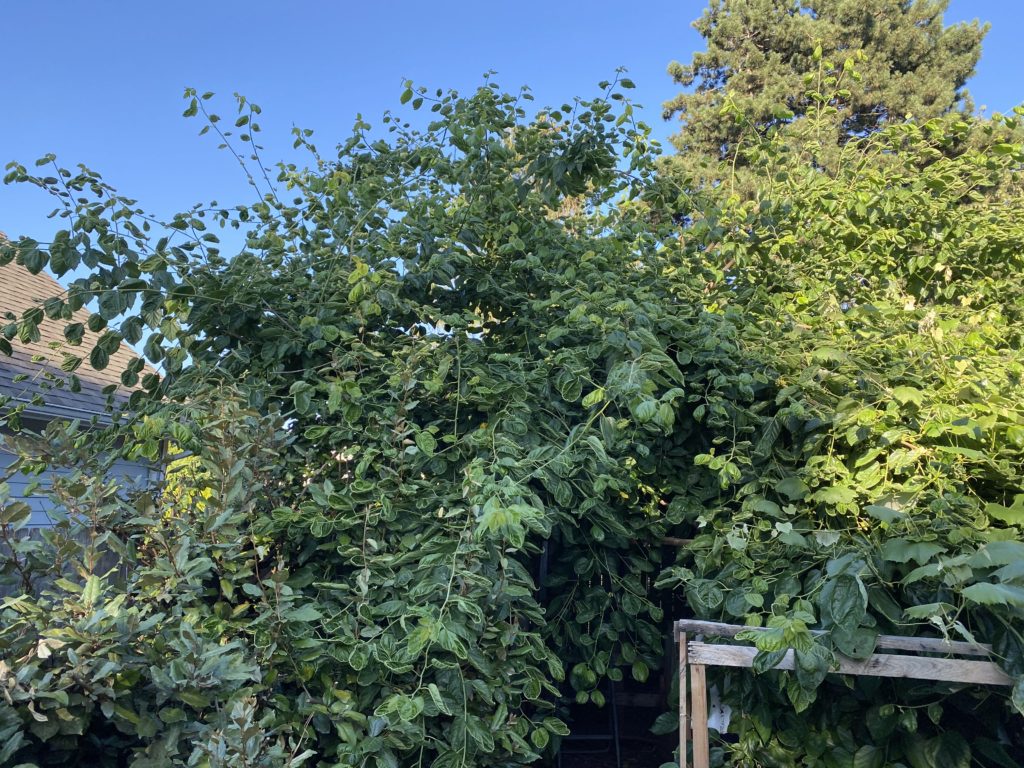The World’s Loudest Runner Duck
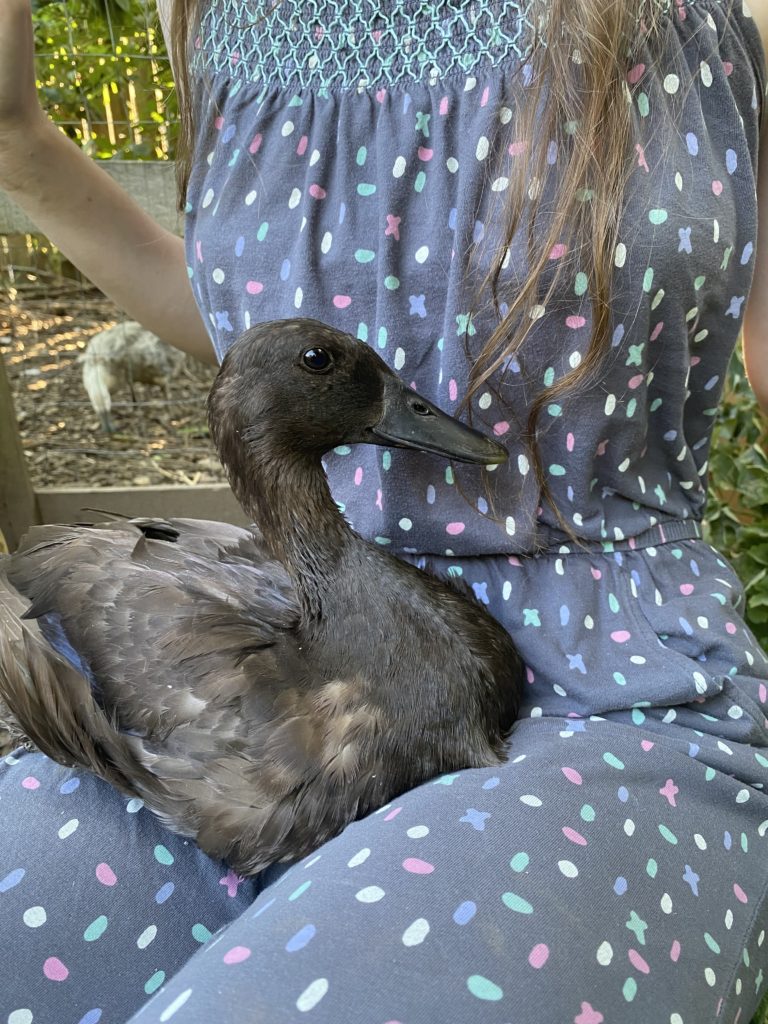
Poultry Keeping: Lots of Options, Lots of Noise
We have raised ducks and chickens for many, many years. If you keep backyard poultry, you’ll know they are not silent. Chickens ba-gawk when laying eggs (or waiting in line for the favorite nest box they all want to lay in). Cockerels crow at all hours. Even older hens in a flock with no roos may sometimes start crowing.
Ducks quack. Drakes peep a quiet little hoarse call (which is why we’ve historically kept drakes to guard a flock, instead of roos). Some breeds of ducks quack more than others, though. For example, the adorable little breed known as the Call Duck lives up to its name, with females (hens) prone to loud and frequent vocalizations.
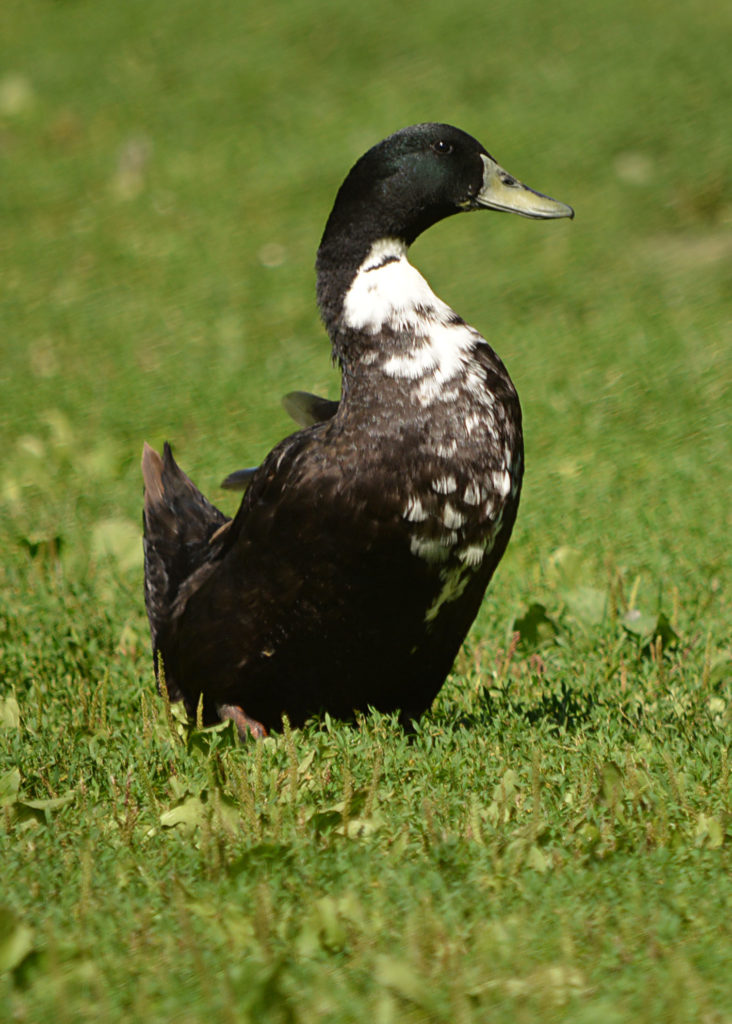
We have kept four breeds over the years: Indian Runners, Khaki Campbells, Blue Swedish, and Welsh Harlequin. All of these domestic duck breeds are descended from the wild mallard, but each have unique characteristics. Khaki Campbells laid prolifically, but were skittish around the kids, and overall more high-strung. Blue Swedish were beautiful, but heavy-bodied (better for meat than eggs, I suppose) and need a pond to cool off and for mating Welsh Harlequins are, in my opinion, the most beautiful duck breed, but also heavy-bodied and less heat-tolerant (they do lay lots of large eggs).
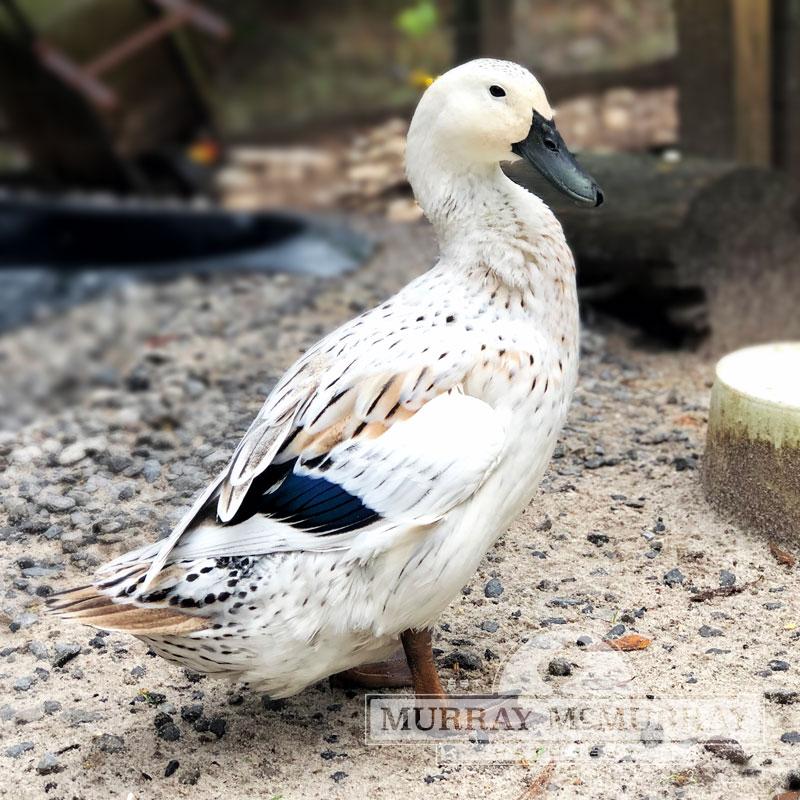
Indian Runners: The Ideal Duck for Small Gardens?
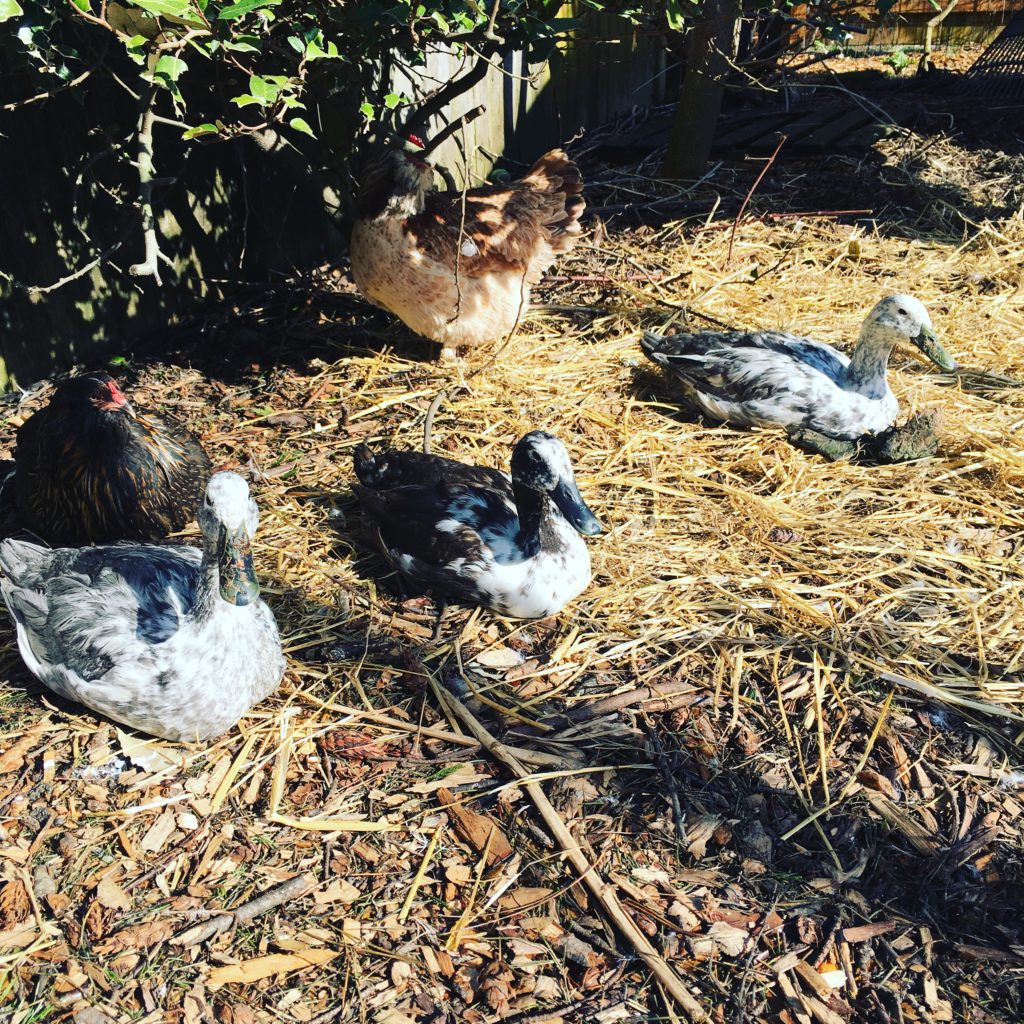
The breed we keep coming back to, over and over again is the Indian Runner Duck. This upright, light-bodied breed doesn’t need a pond (although we do give them a clawfoot bathtub pond). Runner hens can lay 300 eggs a year, and each duck egg is about 1.5x the size of a chicken egg.
Runners are delightfully entertaining, playful, and quirky. Their small size can make them ideal for smaller spaces. The fact that they can get by quite happily without a pond also adds to their suitability in that regard. And ducks don’t scratch, like chickens, making them easier to incorporate into urban gardens. Overall, I’ve been incredibly happy keeping runner ducks on our 1/4 acre property.
That was, until I acquired Brah-brah.
Yes, We’re Flight of the Conchords Fans
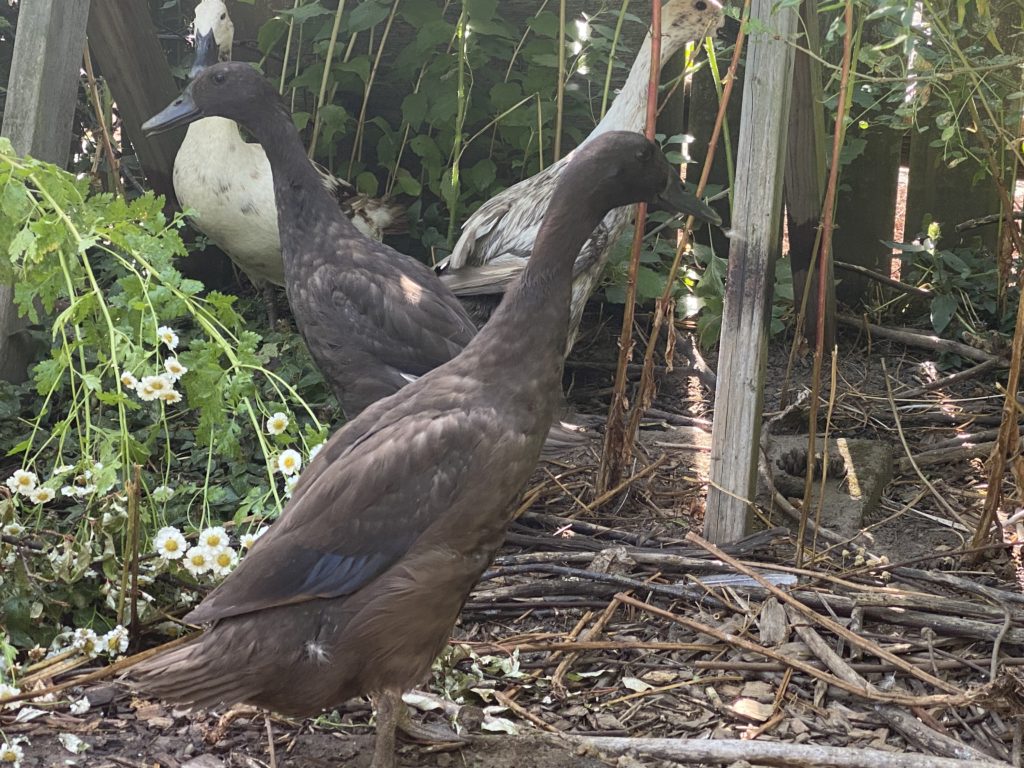
My kids have always picked the names of our poultry. (This is how my favorite Brahma hen ended up with the name John Cena.) At the moment, they’re really into the early 2000’s New Zealand comedy duo: Flight of the Conchords, so this year’s batch of birds got named things like, “Leggy Blonde” and “You’re a Legend, Dave.”
The two chocolate runners we picked out this year got named “Barbara” and “Brah-brah” after an episode in the show where Bret and Jemaine both fall of a woman and Jemaine thinks she’s named Barbara, and Bret thinks she’s named Brah-brah.
Holy Heck, Girlfriend, WHY ARE YOU SO LOUD?
All ducks quack. Runner ducks tend to emit a descending,”Quack QUACK quack, quack…quack….quack,” when they’re alarmed or demanding something, with the emphasis on the second quack, and a string of fading quacks after. You can’t own ducks and expect them to make no noise.
Ducks quack when they are scared, when they’re hungry, when they hear you open the back door and they really excited that you might be coming to visit them. If you can’t handle some quacking, don’t get ducks.
But Brah-brah is on a whole other level. This girl calls exponentially more often, and SO MUCH LOUDER than any of the many, many ducks we have had in the past. I tell her at least once a day she’s got to mellow out, or she’s going to end up in the soup pot because I don’t want her bugging the neighbors with her incessant quacking.
When I Said She Was Loud, I Wasn’t Joking
Why am I inserting a video about summer squash (below) into a post about ducks? I cannot think of a better example of what Brah-brah sounds like several times a day, than her performance in the first 15 seconds of this video. If you want to know what you’re getting into with a duck like her, watch the first little bit:
See? She’s a menace. Her sister Barbara isn’t like this. The older ducks hardly quack any more at all. Her quacking startles the turkeys and is out of character with the tone of the rest of the flock, who are all fairly chill.
So, what should I do with this lady? She’s started laying eggs, she eats slugs like a boss, and is earning her keep. But I have neighbors to think about, and doggone, she’s annoying. Will she settle down as she moves out of the teenager-phase, and into adulthood? Probably, since ducks tend to mellow with age and quack less the older the get. The question is, am I going to put up with her that long in order to find out if she quiets down eventually?




